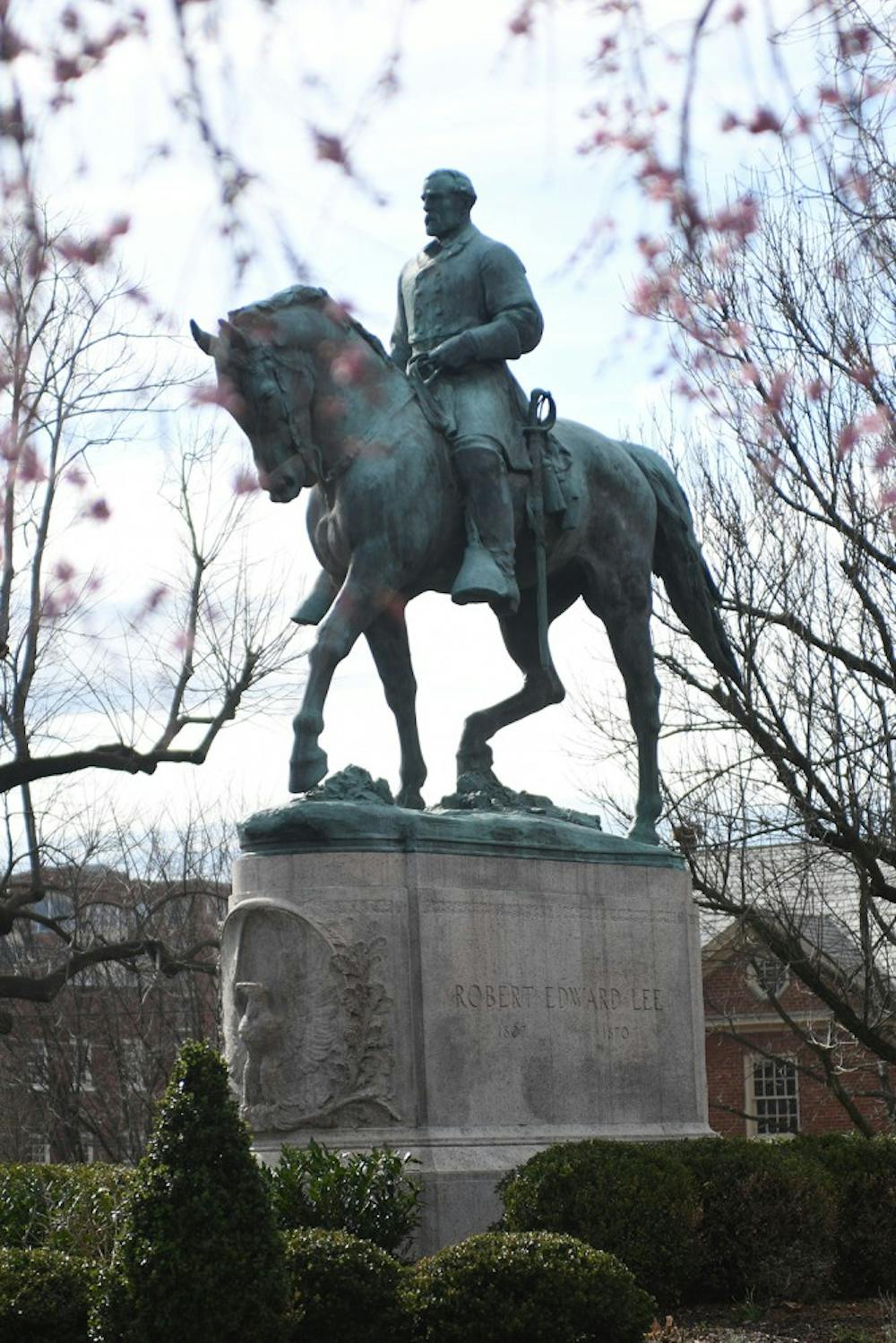On Feb. 6, the Charlottesville City Council voted to remove the statue of Robert E. Lee located in Lee Park. The decision to remove the statue is deeply misguided. Not only is the city spending an estimated $300,000, but it is also removing a piece of our country’s past. We should not seek to remove references of our dark past from public spaces — we should be forced to confront them.
For example, in Michael Moore’s film “Where to Invade Next,” confrontation with a dark past is explored in Germany, where remnants of the Holocaust are still kept in public spaces. Street signs and Nazi-era relics are left intact to remind the citizens of what happened and to ensure they never forget the horrors which occurred. This type of confrontation with the past is needed in our country. The removal of the relics with inconvenient truths about our past are akin to the whitewashing of history. By removing the statue from a public place, we are not confronting our past — we are making it so we do not have to at all.
There needs to be a new interpretation of what these relics mean in our modern society. Every time we confront these emblems of racism and slavery, we should contemplate about what we have done as a nation and think about how we can be a more compassionate country. This would not happen if we hid our past and attempted to change, or remove, objects of our history. Moreover, we cannot properly address the legacy of racism in this country without reminders of past wrongdoings and the realization that the legacy of racism still lives on to this day. Instead of removing these historical figures from public spaces, we should add more plaques and signs in order to properly put these relics into a 21st century context.
This belief is not meant to defend those who have threatened and harassed the city counselors who pushed for removal of these statues. Frankly, the real public divide over this issue means we need to come together as a community to have an overdue conversation about racism and the impacts it continues to have in our society.
Clearly emotions are high on both sides of the issue, but obscuring the past is certainly not the answer. Renaming parks and removing statues constructs the illusion of progress with race relations in this country, while in reality it fails to brings us any closer to this goal.
I hope these lessons are kept in mind while the memorial recognizing the enslaved workers who built this school is created. The monument is meant to be a reminder of the legacy of slavery at this University and should provide a forum for students to grapple with the University's dark past. History is not comfortable, and coming to terms with it is often not easy, but acknowledging it is necessary for justice and proper recognition to be delivered.
Jacob Asch is a Viewpoint writer for the Opinion section of the Cavalier Daily. He may be reached at opinion@cavalierdaily.com.







